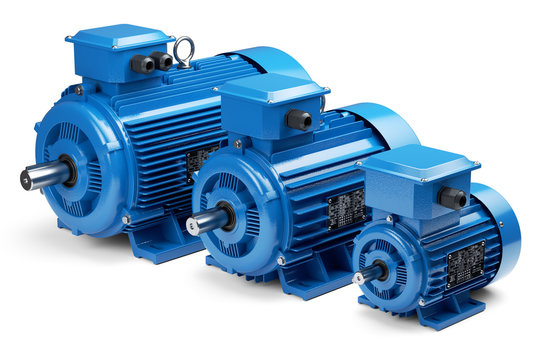
The Science Behind an Electric Motor
Electric motors are the hidden workhorses of modern life, quietly powering everything from household appliances to industrial machinery and electric vehicles. At the heart of an electric motor’s operation lies torque -the rotational force that enables mechanical work. Torque not only defines a motor's efficiency and performance but also determines its suitability for specific applications.
Whether it's driving a conveyor belt, operating a water pump, or propelling an electric car, understanding how motors generate torque is crucial for engineers and technicians. This article explores the science behind torque production in electric motors, highlighting the electromagnetic principles, motor design elements, and control strategies that shape motor performance.
Understanding the Basics of Electric Motors
Before diving into torque production, it's essential to understand how electric motors are structured and classified.
Types of Electric Motors
Electric motors come in two main categories:
-
DC Motors: Operate on a constant voltage. Subtypes include:
-
Separately Excited Motors: Independent control of field and armature windings.
-
Series Motors: High starting torque.
-
Shunt Motors: Stable speed.
-
Compound Motors: Combine characteristics of series and shunt motors.
-
-
AC Motors: Operate on alternating current and include:
-
Induction Motors (Asynchronous): Most common, robust, and low-maintenance.
-
Synchronous Motors: Maintain constant speed, used in precise and high-power applications.
-
Key Components
-
Stator: The stationary part with coils that generate a magnetic field.
-
Rotor: The rotating part that interacts with the magnetic field to produce motion.
-
Bearings: Reduce friction and support rotor movement.
-
Commutator and Brushes: Present in DC motors to maintain electrical contact.
Core Electromagnetic Principles Behind Torque Production
Several physical laws explain how electric motors generate torque:
1. Magnetic Fields and Electric Currents
When electric current flows through a conductor, it generates a magnetic field. In motors, the interaction between the stator’s and rotor’s magnetic fields is what produces torque.
2. Ampere’s Circuital Law
This law relates the magnetic field around a conductor to the current flowing through it. It helps in understanding magnetic field strength within the motor.
3. Faraday’s Law of Induction
Changing magnetic fields in AC motors induce voltage in the rotor windings, causing current and thus enabling the motor to produce torque.
4. The Lorentz Force
Charged particles moving through a magnetic field experience a force. In motors, this force acts tangentially on the rotor, creating torque and causing rotation.
Torque Generation: How It Happens
Interaction Between Magnetic Fields
Torque is created by the interaction of the stator's and rotor's magnetic fields. These forces cause the rotor to spin, converting electrical energy into mechanical energy.
Explaining Torque with the Lorentz Force
The Lorentz force acts on electrons in the rotor conductors, pushing them in a direction that results in rotation. This is the direct cause of torque in electric motors.
Mathematical Representation
Torque (τ) can be expressed as:
τ=B⋅I⋅l⋅r⋅sin(θ)τ = B \cdot I \cdot l \cdot r \cdot \sin(θ)
Where:
-
B = magnetic field strength
-
I = current
-
l = length of the conductor
-
r = rotor radius
-
θ = angle between magnetic field and current direction
Torque Characteristics by Motor Type
DC Motors
-
Series: High starting torque; speed varies with load.
-
Shunt: Stable speed; moderate torque.
-
Compound: Balanced performance; adaptable to various needs.
AC Motors
-
Squirrel-Cage Induction Motors: Reliable, low maintenance, used in pumps, fans, and conveyors.
-
Wound Rotor Induction Motors: Allow better control and high starting torque.
-
Synchronous Motors:
-
Salient Pole: Best for low-speed, high-torque tasks.
-
Cylindrical Rotor: Ideal for high-speed, consistent-load applications.
-
Optimizing Motor Efficiency and Performance
Key Efficiency Factors
-
Copper Losses: From resistance in windings.
-
Iron Losses: From magnetic hysteresis and eddy currents.
-
Mechanical Losses: Due to friction and windage.
-
Stray Load Losses: From irregular magnetic distribution.
Torque-Speed Characteristics
-
Starting Torque: Critical for initial motion.
-
Full-Load Torque: Under rated operating conditions.
-
Maximum (Pull-Out) Torque: Peak capability before stalling.
-
Breakdown Torque: Limit at which the motor stops rotating.
Motor Control Strategies
-
Variable Frequency Drives (VFDs): Control speed and torque by adjusting power frequency.
-
Direct Torque Control (DTC): Enables fast, accurate torque management for superior performance.
Conclusion
Electric motors transform electrical energy into mechanical motion through the interplay of magnetic fields and currents, governed by foundational laws of physics. Torque, the cornerstone of this transformation, defines how motors function across a wide range of applications.
By understanding torque production, engineers can select the right motor type, optimize system performance, and reduce energy consumption. As the demand for sustainable and high-efficiency systems grows, mastering the science behind electric motors becomes more essential than ever.
For more information, contact PLG Automation:
Email: sales@plgautomation.com
Phone: 800-906-9271
